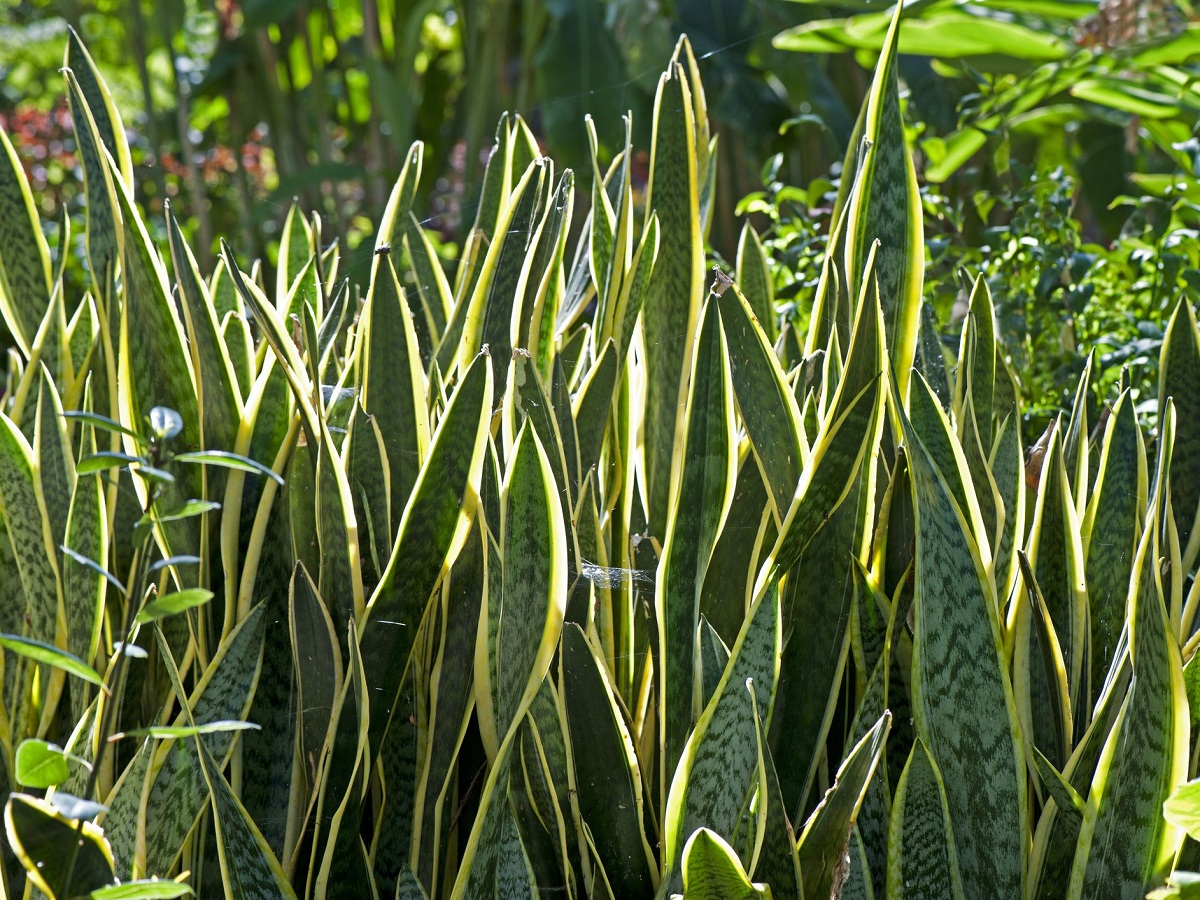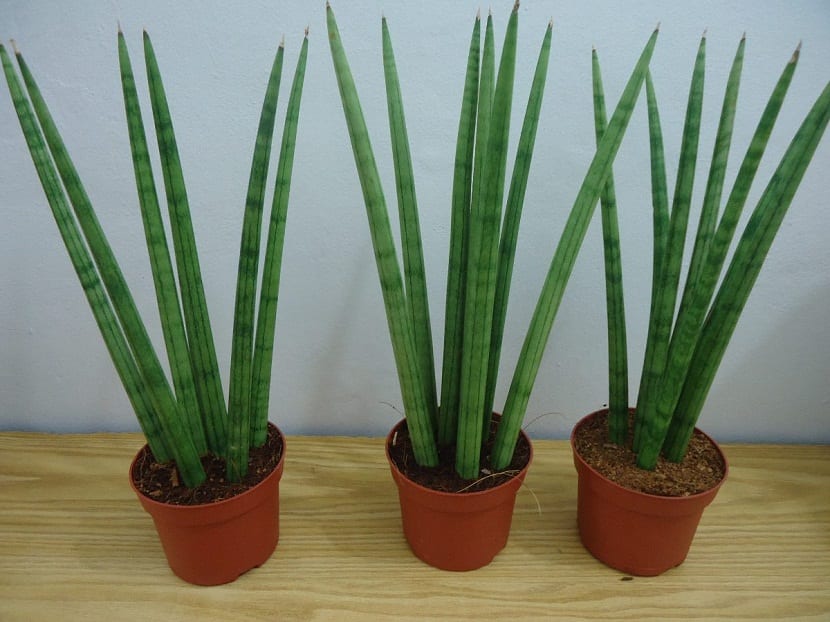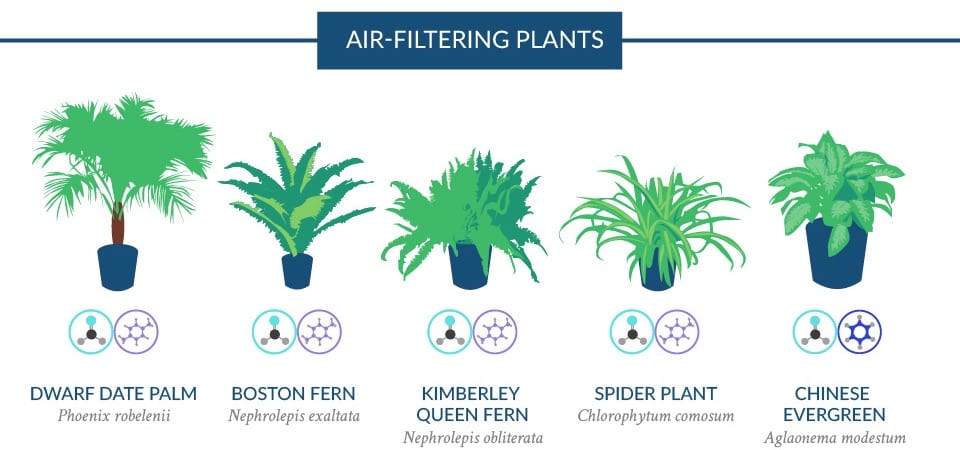
La sword of saint george It is one of those plants that when you see it, it looks very simple, very common. However, when you get closer and you see it better you realize how decorative it is. Whether you have green, silver or variegated leaves, with or without lines, this is a type of vegetable being with which anyone can decorate their home, even if they do not have much experience in the world of gardening. Its care is very simple, since it can also live without problems in pots throughout its life. And since it does not need much sun to grow, it is ideal to have in rooms that do not get much light.
In this article we are going to tell you all the characteristics and how to take care of the sword of Saint George.
What is the sword of Saint George like?

This is a plant native to tropical Africa belonging to the genus Sanseviera known by the scientific name Sanseviera trifasciata, and by the commons of Rabo de tigre, Sanseviera, Tongue of Mother-in-law, Tongue of tigre, and of course, Sword of Saint George. It is also found in parts of Asia and especially in New Guinea. In these countries a fiber is used to extract from the leaves that is used in the manufacture of ropes and vegetable ties. One of the symbols that unites this plant is that of "I tie you to me."
This plant belongs to the Liliaceae family. It started to be popular there in the 1930s and still maintains this popularity to this day. The reason for its popularity is that it is one of the hardiest indoor plants we can find. Since it has a similar nature to that of a succulent plant, it helps to tolerate times of drought quite well. Another fundamental aspect for which the sword of Saint George becomes so well known is because it is perfect for all those people who are very careless with their plants. And it is that this plant hardly requires care. The only thing that usually supports us well is excess water.

They arise from a rhizome found underground. The adult specimens produce greenish-white flowers that sprout from a terminal stem (that is, when the flowers dry and the fruit ripens, it wilts). They give off a very pleasant aroma.
Key features
It is characterized by having flat-concave, thick and quite hard leaves, that measure between 30cm and 1m in length. It is one of the plants that has the most recommendations to have at home since it has the ability to purify the air. This is due to its ability to neutralize and absorb certain harmful elements such as formaldehyde, trichlorethylene, benzene or xylene. If you have this plant inside, it will help purify the air in your house.
The sword of Saint George It is recommended to have in darker places as it holds up well in low light conditions. It is capable of transforming carbon dioxide into oxygen overnight. They also survive excess heat and dry spells quite well. If we are people who tend to forget about watering plants, this plant can survive quite a bit without water.
The fact that it is a plant with high rusticity does not make the vessel its ornamental potential. There are people who only have it in their home for the fact that it can purify the air. However, it is a plant that has a sharp profile and well-defined contours that give it great expressiveness. It also helps to adapt to interiors decorated in a modern style. Thus, Not only can it be a great ally to purify our air but we can also use it as an ornamental element.

Caring for the sword of Saint George
Although we have said that it is a fairly rustic plant and that it does not need much care, it does have to keep a few minimums. If you want to have a Sword of Saint George and you don't know how to take care of it, don't worry. We are going to analyze what care you need.
Location and irrigation
The first thing we have to take into account is the location. It is a plant that survives well in the shade, so we can have it both indoors and outdoors in semi-shade without any problem. Withstands temperatures that they go from 5 to 30 degrees without any problem. It must be brought to light at least once a week so that it can develop well. However, it grows best if it is in semi-shade most of the time.
You have to be careful with pets and put it in a place where it is not in danger for these animals since it is very poisonous for them.
Regarding irrigation, it is necessary to Indicator that the soil is completely dry. When there is no moisture, it is when you have to water again. If you keep it moist, it will rot. You have to increase watering a little more in summer.
Substrate and compost
It is interesting that the pot where we planted it has a substrate rich in organic matter, such as this. Add three quarters of coarse sand to improve drainage. It is important that the plant does not accumulate irrigation water.
If you want to have it in the ground and it is very compact, I advise making a hole large enough to fit a block (of the rectangular ones), insert said block and plant the plant in the hole with universal growing substrate mixed with perlite. In the event that you want to have it in a pot, you can use this same substrate.
In spring and summer, it must be paid with fertilizers for cacti and succulents, following the instructions specified on the packaging. If you want to transplant this pot you have to wait for the spring time. You also have to know that you should change the pot when it breaks due to the number of shoots or when you notice the roots that come out through the drainage holes. If you have transplanted the plant, it is better to increase the watering a little more at the beginning.
Finally, it can be multiplied by division of bushes and it is also done in spring.
I hope that with this information you can learn more about the sword of Saint George and its care.






Hello, I really liked the details and clarifications.
I have St. George sword plant since October last year, incense and gallo chalk from today ... I will have to read and reread ... your articles ... since I am not very shower I am afraid that they will die ...
If you have any questions, write us 🙂
This article has clarified a lot for me, it is very well written and detailed, I have followed the advice and I have my spectacular Saint George sword. My congratulations
Hello Cristina.
Thanks for your comment. We are glad that it has been useful to have your plant healthy 🙂
Greetings.
I just bought one and it has two sheets with vertical cuts on the lateral sides, can it be cured?
Hi Ignacio.
The leaves with those cuts will not recover. You can take them off when they turn yellow and dry.
But the rest of the plant should not be affected.
Greetings.
The page and all the articles are very good. Thanks!!
Hello Fran.
Great that you like the blog 🙂
Thanks for the detailed explanation. How to grow them in pots without a hole in the bottom ?. Thank you again
Hello Havana19.
We're glad you liked it, but we're sorry to tell you that if your pot doesn't have holes, you risk dying quickly. When irrigated, the water remains stagnant inside, right where the roots are, which, being in such direct contact with the water, end up rotting.
It is better to have them in a pot with holes and a plate underneath, than in one without holes, since the water that remains in the plate can (and should) be removed after a few minutes of watering.
Greetings.
Hello, I would like to know why my sword of San Jorge plant gets watery at the bottom if I don't pour water on it !! and it does not reproduce what am I doing wrong? Ayudaaaaa or will it be the compost land?
Hello Andrea.
What kind of land does it have? Is it in a pot without holes?
It is important that the soil is porous, light, and capable of absorbing and filtering water quickly (for example, a good mix would be equal parts black peat with perlite). In addition, if the pot must have holes in its base so that the water can come out, since otherwise the plant will rot.
Greetings.
Hello, mine is very long and the sheets are folded. I have them tied with a range since the highest ones do not hold alone. What I can do? The current pot is 20cm high.
Hello Ana.
When it cannot stand and bends, it is because it is not giving it all the light it needs. This plant can be had in semi-shade, but in total shade this happens.
So if it is not, I recommend moving it from place to place, to a brighter one.
If you have questions, tell us.
Greetings.
It amazes me that in all the articles I have found they recommend not to water it too much. I must tell you that when Mom was alive she found one with a root that they removed from a house and simply threw it away, she picked it up and brought it, but while we were buying a pot for her, she only put it in a pot with water, there it reproduced and it is spectacular. That was many years ago. Mom left, many things happened that made us forget the plant, which is still here ... in the pot with water, completely healthy and strong. I have her pot and everything ready to transplant her, but I am very afraid of losing her, because she grew, reproduced and lives in water, what do you advise me?
Hi Rosy.
It is curious what you explain, since this is NOT an aquatic plant at all, but it grows on land.
But I will also tell you something: if it has been there all its life, in water, and it is fine, I do not recommend transferring it to a pot with normal soil. Sometimes changing a plant is worse than leaving it where it is, and in this strange case, and considering the history it has, I do not consider it a good idea to transplant it.
Regards!
Thank you very much, the information was very useful.
regards
Roberto, Salto, Uruguay
Hello Roberto.
Thanks to you for commenting 🙂